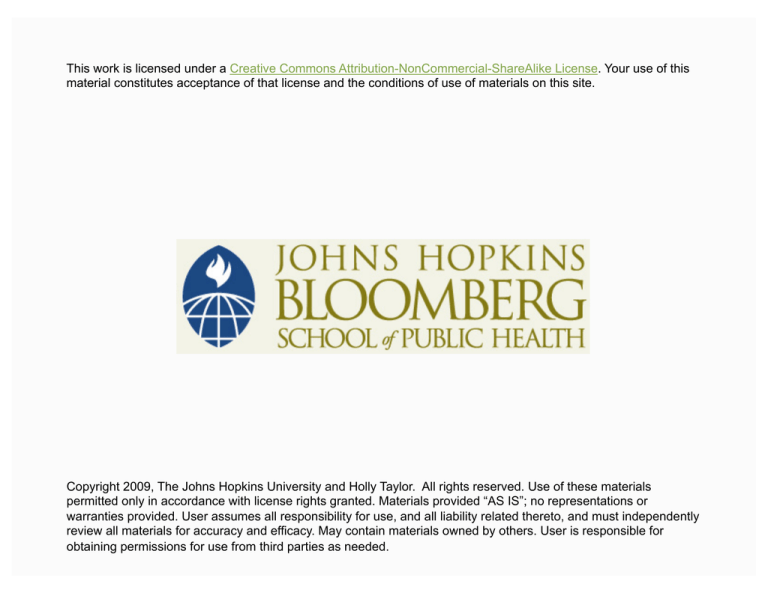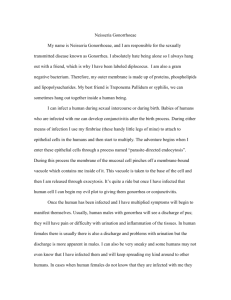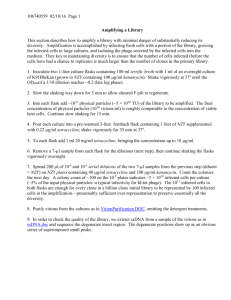
This work is licensed under a Creative Commons Attribution-NonCommercial-ShareAlike License. Your use of this
material constitutes acceptance of that license and the conditions of use of materials on this site.
Copyright 2009, The Johns Hopkins University and Holly Taylor. All rights reserved. Use of these materials
permitted only in accordance with license rights granted. Materials provided “AS IS”; no representations or
warranties provided. User assumes all responsibility for use, and all liability related thereto, and must independently
review all materials for accuracy and efficacy. May contain materials owned by others. User is responsible for
obtaining permissions for use from third parties as needed.
Optional Section D: Design Choices
Steven N. Goodman, MD, PhD
Summary of Design Choices with Ethical Implications
Whether or not to do study
Need for randomization
Recruitment and eligibility
Choice of comparison group
-
-
Placebo?
Blinded?
Endpoints
- Surrogate?
- Definitive?
3
Summary of Design Choices with Ethical Implications
Methods for determining endpoints
- Medical records? discharge summaries? etc.
Length of follow-up
Sample size
Handling of drop-out, cross-over, and loss to follow-up
4
Tale of Two Trials: The Introduction
Projected perinatal HIV transmission rates under three treatment
regimens:
Placebo
40%
Short course
30%
Medium course
20%
5
Tale of Two Trials: The “Tough Love” Trial
Group 1
- Medium course therapy
20% transmission
Group 2
- Placebo
40% transmission
Sample size
- 50 per group
6
Tale of Two Trials: The “Compassionate” Trial
Group 1
- Medium course therapy
20% transmission
Group 2
- Short course therapy
30% transmission
Sample size
- 200 per group
7
“Tough Love” Trial Outcomes
What happens to the first 400 children?
“Tough love” trial, N = 50 per group
- Group 1 (medium course therapy)
20% x 50 = 10 infected children
- Group 2 (placebo)
40% x 50 = 20 infected children
-
Total = 30 infected children
8
“Tough Love” Trial Outcomes: The Next 300 Children
Next 300 given “winning” (medium course) therapy
- 20% x 300 = 60 infected children
Grand total = 90 infected children
9
“Compassionate” Trial Outcomes
What happens to the first 100 children?
“Compassionate” trial, N = 200 per group
- Group 1 (short course therapy)
30% x 50 = 15 infected children
- Group 2: (medium course therapy)
20% x 50 = 10 infected children
-
Total = 25 infected children
10
“Compassionate” Trial Outcomes: The Next 300 Children
Next 300, still on the trial
- Group 1
30% x 150 = 45 infected children
- Group 2
20% x 150 = 30 infected children
- Total = 75 infected children
Grand total = 100 infected children
11
AIDS Multidisciplinary Working Group Suggestion: 1
1. Asking harder questions about whether the medical questions
justify an RCT, and whether an RCT is the only way (as opposed to
the fastest way) to answer it
12
AIDS Multidisciplinary Working Group Suggestions: 2, 3
2. Community consultation should be sought in the early
stages of trial planning for the purposes of planning, not just
approval; IRBs should also include community representatives; get
“community consent”
3. All RCTs should have data monitoring boards, pledged to secrecy,
with “stopping rules”
Source: Levine et al. (1991). IRB, 13, 1–17.
13
AIDS Multidisciplinary Working Group Suggestion: 4
4. Goals of both investigators and participants should be to provide
the best personal care consistent with protocol requirements, and
assist participants who wish to alter their participation; consider
involving a personal physician independent of the RCT and offering
disadvantaged populations the same alternatives available to some
others—e.g., an explicit range of options, referral to a private
facility or caretaker, medical and social support services equal to
or greater than might be expected from a personal physician
Source: Levine et al. (1991). IRB, 13, 1–17.
14
AIDS Multidisciplinary Working Group Suggestion: 5
5. Informed consent is an ongoing process; participants should be
made aware of all relevant clinical trial results in a timely and
effective fashion, avoiding premature release of unsubstantiated
data, or obtain consent for incomplete disclosure
Source: Levine et al. (1991). IRB, 13, 1–17.
15
Conclusion
“I do not believe that heightened resistance here must
cripple research, which cannot be permitted; but it may
indeed slow it down by the smaller numbers fed into
experimentation in consequence. This price—a possibly
slower rate of progress—may have to be paid for the
preservation of the most precious capital of higher
communal life … whose loss, possibly caused by too ruthless
a pursuit of scientific progress, would make its dazzling
triumphs not worth having. … With all our striving to wrest
from mortality what we can, we should bear its burden with
patience and dignity.”
— H. Jonas, 1969
16
New Yorker Cartoon
JHSPH OpenCourseWare was not able to secure
permission to use this image.
17






